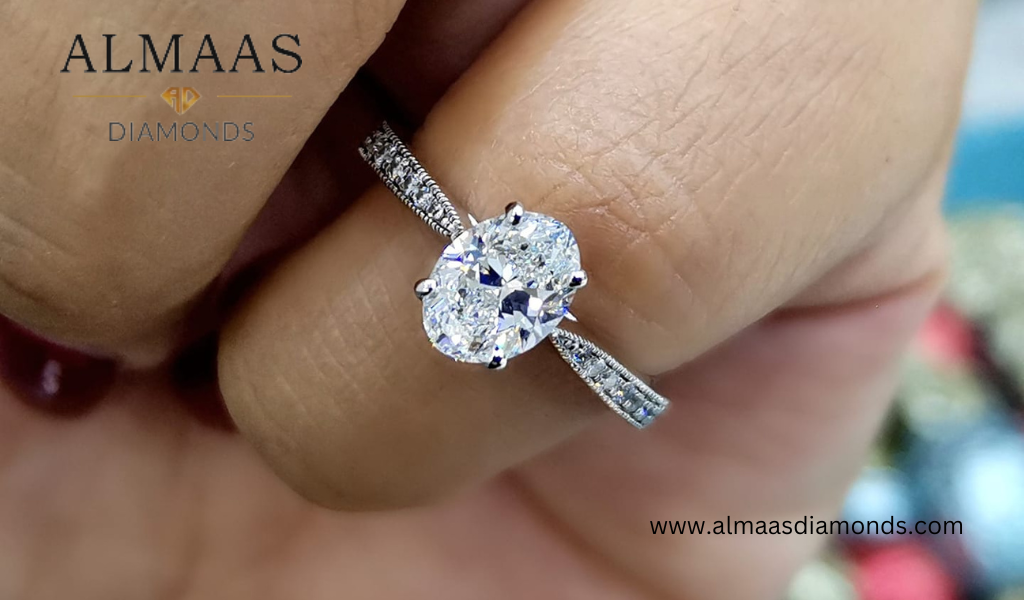What Is Lab-Grown Diamonds?
Lab-grown diamonds are exactly that; they are diamonds grown in controlled laboratory environments under advanced technology processes simulating the natural conditions in which they occur naturally. Identically chemically, physically, and optically comparable to their natural counterparts, but thousands of times faster in their production. Such as a few weeks instead of billions of years.The two main processes by which cultivated diamonds are created are as follows:
High Pressure, High Temperature (HPHT). This process relies on extreme heat and pressure, nearly as close to what occurs in nature.
Chemical Vapour Deposition (CVD). This is a newer process. CVD uses carbon-rich gas and places it in a chamber and at a heat. It lets the carbon atoms settle together to form a diamond.
What is Natural Diamonds?
Natural diamonds form deep in the earth mantle for millions to billions of years under scorching heat and pressure. They are then brought closer to Earth's crust via volcanic activities and can be mined. Since natural diamonds take so long to produce, they rarely occur in nature, which makes them pricey in most cases more than lab-grown diamonds.What Are Some of the Major Differences Between Lab-Grown and Natural Diamonds?
- Origin
Natural Diamonds: Formed naturally over billions of years in the Earth's mantle.
- Price
- Environmental Impact
- Rarity and Value
- Inclusions and Imperfections
What About Investment Value?
For investment, I suppose, historically speaking, it is more valuable to put your money on a natural diamond. Lab-grown diamonds, though, since they are more accessible and cheaper, may not appreciate just like natural ones. Still, if you favour the beauty and sustainability of the stone over the potential resale value, then lab-grown diamonds are what you're looking for.
Final Verdict
There's no right or wrong in this decision between lab-grown diamonds and natural diamonds. It simply depends on your personal preferences, the budget that you can afford, and so on. If the point for something affordable is held when eco-friendly and has the same sparkle and beauty, then lab-grown diamonds are indeed excellent options. If, however, rarity and long-term investment value are what mean something to you, then the natural diamond can be justified at the higher price tag.
More importantly, however, it should be known that no matter what choice you make, you will definitely get the certified and transparent jeweller to show you the actual story of your diamond. Whether it is for that blinding engagement ring or for one fantastic lab-grown loose diamond, you are guaranteed to find the best piece to treasure for years to come.
This will enable you to weigh out the pros and cons of both types of diamonds, which will then help you make a perfect choice that really represents your style, values, and budget.
Also read: The Perks Of Lab Created Diamond Engagement Rings
How Many Questions Can I Ask About Lab-Grown Diamonds?
Are lab diamonds as good as natural diamonds?As far as the concerned question goes, yes, lab-grown diamonds are the same as natural diamonds. They are made of carbon, identical in physical, optical, and chemical properties, and therefore, they present the shine, toughness, and glitter of a mined diamond; thus, it might not be possible to differentiate with naked eyes.
Do lab-created diamonds have value?
Being cheaper than any natural diamond, lab-created diamonds still hold the value of resale in them, although not at as steep a price. When these lab-created diamonds become popular, you can foresee a drop in their resale price. One such difference is because the 'long-term money' clings to natural diamonds attached, as the former doesn't boast of rarity. But if it's about pocket-friendliness with no long-term investment to be made, then lab-created diamonds fit the bill perfectly.
Does a lab diamond pass a diamond test?
Yes, lab-grown diamonds will pass a diamond test. Since they are made from carbon, exactly like natural diamonds, they will exhibit the same properties when under tests like the thermal conductivity test. Only very specialised equipment can distinguish the two.
Do lab diamonds turn yellow?
No, lab-grown diamonds do not turn yellow. They, like natural diamonds, become made stable and durable to remain that way over time. A lab-created diamond will maintain its colour and clarity as well as a natural diamond would. The only time a diamond is likely to appear yellowish is if some form of internal impurity or defect exists within it. In both lab-grown and natural diamonds, this happens rarely.

